Altra Provision 1.5 (2014)
For a number of reasons, Altra is a unique beast in the running shoe market. If you’re not familiar with their product line, it is built upon a foundation of one key feature: Zero Drop. Altra says that they coined this term, which is another way of saying that the heel and forefoot have an identical height. Some might call this non-ramped, or simply ‘flat’.
The reason that I think Altra is compelling is that they did not corner themselves into being a ‘minimal’ running shoe company. As we’ve written about in the past, there is an interesting problem in the running shoe world, where the word ‘minimal’ is overused, abused, and confused. In our opinion, minimal is not synonymous with low drop or zero drop. Shoes may be thick, thin, heavy, or light – and still have this ‘zero drop’. Altra does indeed have several options and thicknesses available.
Today’s shoe from Altra is their Provision – the 1.5. This is the newer version of the original Provision, and features an improved upper and fit.
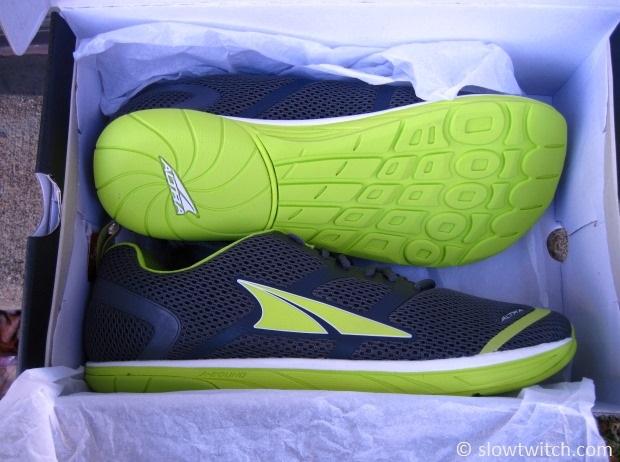
2014 Altra Provision 1.5 specs:
MSRP: $115
Sizes: 7, 8, 8.5, 9, 9.5, 10, 10.5, 11, 11.5, 12, 12.5, 13, 14
Weight: 10.5 oz
Heel-to-toe offset (ramp): 0mm
Stack height: 27mm medial, 23mm lateral; 22mm without wedge insole
Widths: One
Category: ‘Natural’ / Stability
Estimated mileage 300-500
Women’s version: ‘Provisioness’
As you can see, Altra proudly displays their number one feature:
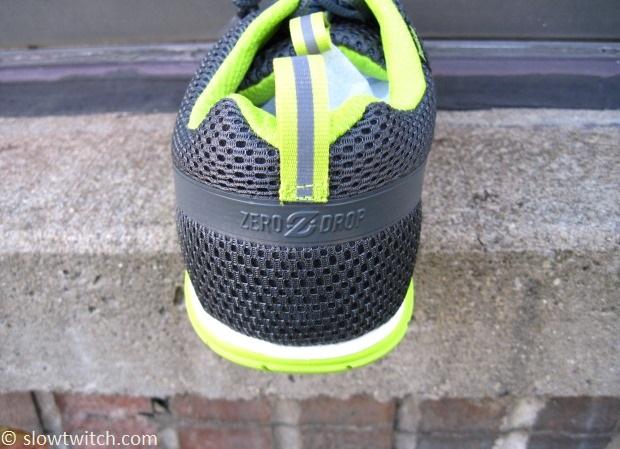
Altra also touts a wide toe box that allows your toes to spread naturally; similar to how you would be while barefoot:
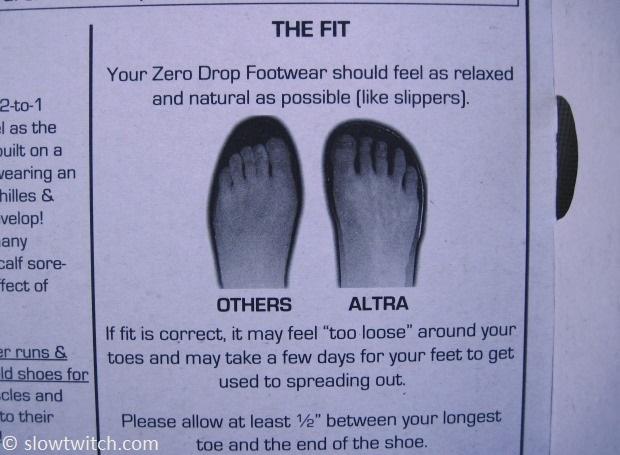
The sizing of the Provision runs on the small end of the spectrum. I normally wear 11.5 in most Saucony, Brooks, and New Balance, but required a 12 in the Provision 1.5. Altra representatives recommended buying ½ to 1 full size larger than your normal shoes. I have been wearing mine with thick wool socks for winter running, and the fit feels just right.
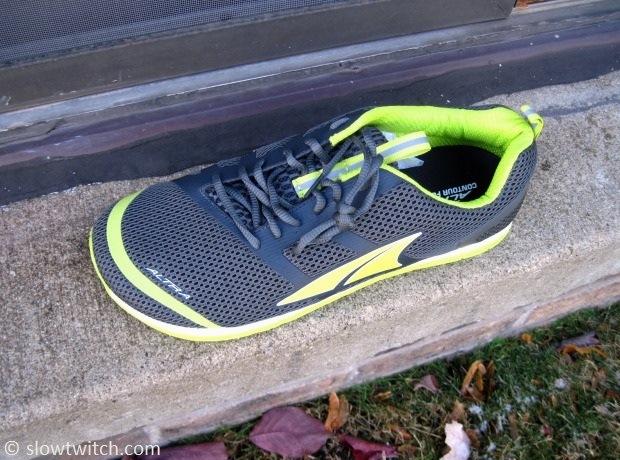
The Provision is very unique in the running shoe market. What’s the big deal? It is a zero drop shoe that also has stability features.
I have no idea why this type of shoe is so rare, but it is indeed. Other shoe manufacturers assume that if a person wants anti-pronation features (variable density foam, wedging, a particular last shape, etc) – that they also want a high ramped sole. You can find many low ramp and non-ramped shoes that are intended for a neutral runner, and also high ramped shoes for neutral runners. It’s the no-drop and stability-feature combo that is the diamond in the rough.
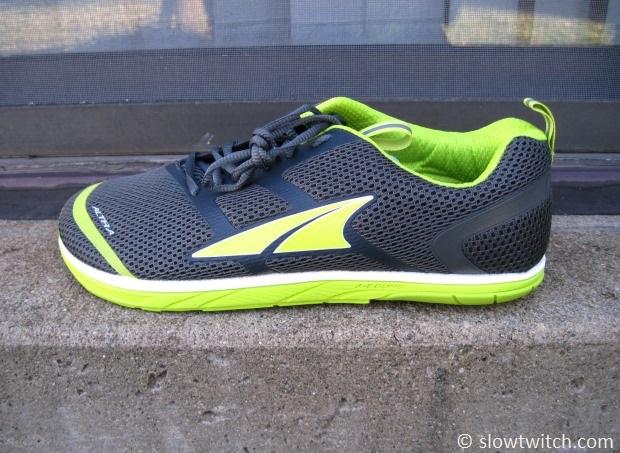
According to Altra representatives,
“Three things give the provision its stability – density of the midsole, the removable stability wedge (the most vital), and the upper structure.”
The stability wedge is a second insole, seen here:
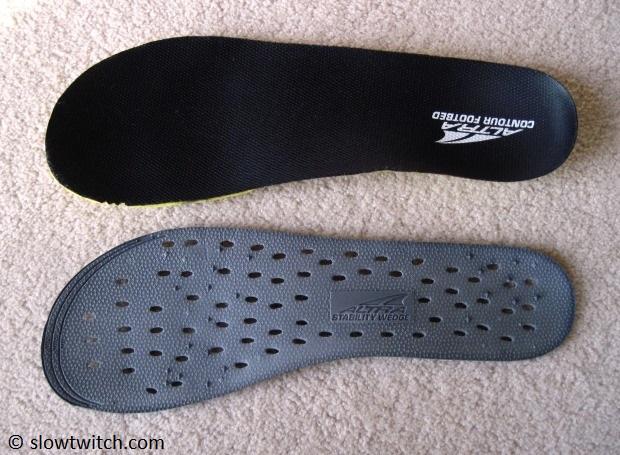
The gray stability wedge (bottom, in above photo) goes beneath the standard sockliner. You can use both, one, or nothing at all.
The thing I’d like to see more of from Altra is information. How, exactly does this work? What are the thicknesses of all three potential setups?
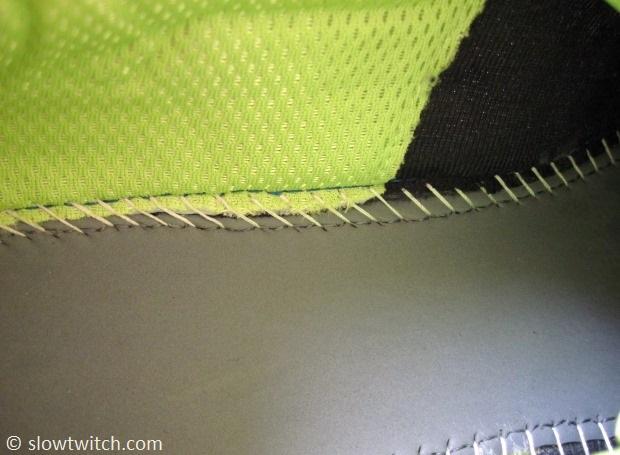
For example, the Instinct model is said to have a 12mm midsole, a 4.5mm outsole, and 12mm cushioning, yet the total stack height is somehow listed at 22mm. The Provision 1.5 lists a 22mm stack height without any insoles. With insoles, it is 27mm medial and 23mm lateral, so it seems as though they’re manipulating height across the width of the shoe. We don’t know, however, if that height assumes that both the stability wedge and standard sockliner are used – and what the thicknesses of both of those components are. Our readers tell us that it is always preferred to as much information as possible.
Despite not really knowing how this added up, I wanted to give the shoes a fair shake. For full disclosure, I historically tend to like low/no drop shoes (4mm of drop or less). I don’t typically like super-thin shoes for most running, and don’t seem to have much preference between neutral and mild guidance shoes. If I had to pick an all-time favorite thus far, it is the Kinvara/Mirage series from Saucony.
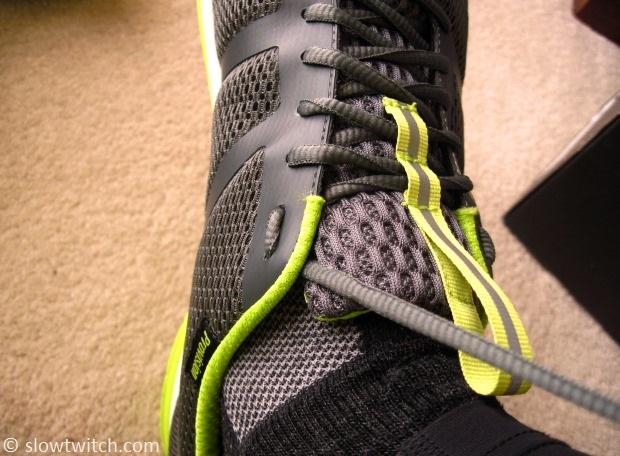
After running around in the Provision 1.5 for about 6 weeks, I found them to be quite agreeable, primarily using both insoles at once. Based on what I’ve read of Hoka shoes (I’ve never tried them), these feel like what I’d call a ‘Hoka Lite’. They’re very well cushioned, and seem to guide your foot nicely-but-not-forcefully. At 10.5 ounces, they’re no featherweights, but are far from boat anchors. I use them as road-only shoes, due to the low tread, and they really seem to take the harsh edge away from hard surfaces. Altra now offers their own thicker-soled super cushion shoe called the Torin – but it is only available in a neutral (not stability) version.
My only gripe with the Provision 1.5 is the lace material. It is really, really slick. I found that the laces would start to untie themselves over time, and especially in cold weather. In one instance, I had a triple knot undo itself. The consequence this had was that the shoes constantly loosened up, so that my heels would start to slip out of the back of the shoe. My sizing felt perfect (e.g. I don’t think my shoes were too large), the laces just let loose. I generally prefer elastic laces for my racing shoes, and I think that they would likely solve this problem.
If you’re looking for something with no heel-toe drop, I highly recommend trying on a pair of Provision 1.5’s. They’re very cushy, and have a very natural feel overall. Even if you don’t think you need a stability shoe, these might surprise you and change your tune.
All images © Greg Kopecky / slowtwitch.com



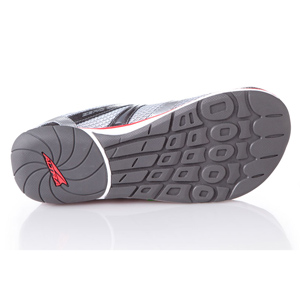
Start the discussion at slowtwitch.northend.network